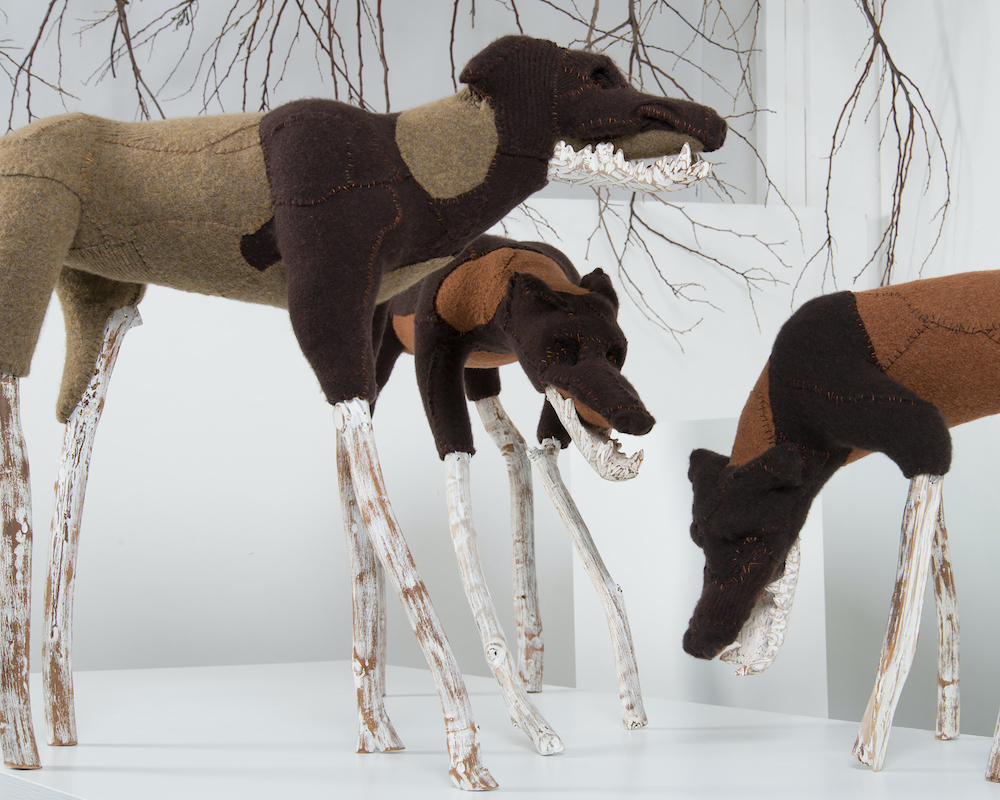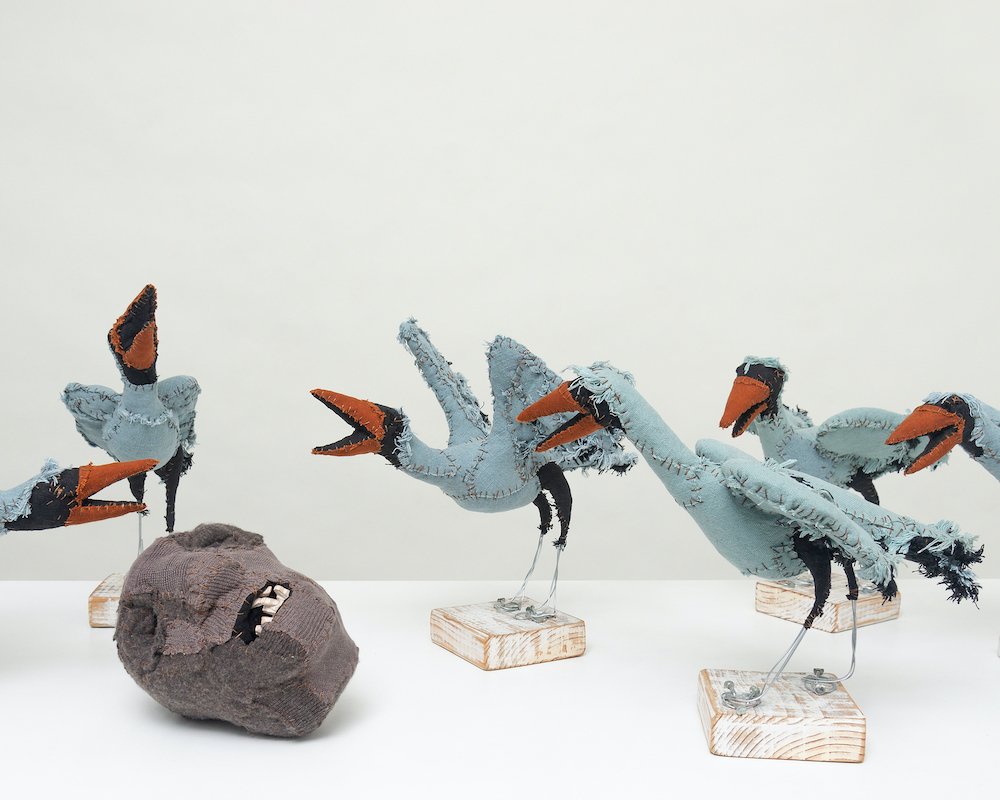Samuelle Richardson is a sculptural textile artist who began her career as a painter. Her painting itself evolved from studies in anatomy, for which she made 3D skeletal models. But by chance—or fate, when her painting studio became unavailable 10 years ago—she switched to her current technique in sculpture. “You might say that my work has come full circle,” she says.
While her fabric sculptures emphasize the handmade quality of her creations, her classical art training is also quite evident, as she builds her figures from the inside out, from skeleton, to muscle, to skin.
Her art has a strong ecological bent, focusing on shaping animals that live on, even in the face of our rapidly changing climate. According to Richardson, “As the natural world is diminished by modern society, I reflect on an era when the order was reversed. I’m rewinding our story to a time when mankind believed that beasts had divine power. Ancient man and the animal were spiritually interdependent, and I like to play with the hierarchy of value, imagining how today we might be different.”
Regardless of her subject, Richardson looks for “good design qualities that support poetic rather than literal imagery,” she says. A pleasing arrangement of shapes and materials are important to her, with the subject “characterized by the sublime, appealing to all that is deadly and beautiful,” she adds.

“Ghost Dogs,” photo by Martin Cox, courtesy of the artist.
The sculptures themselves are solid constructions created of wire and foam rubber wrapped in fabric. Their textural quality allows viewers to imagine, or intuit, the presence of fur, feather, tooth or talon. Her work is both firmly rooted in recognizable portrayals and magically alive. The differences between an actual, living creature and Richardson’s constructs is a kind of alchemy. The viewer knows the animals—whether lion, bird, “ghost dog,” or human—are not real, yet they are imaginatively very much alive, fairy-tale creatures that have transcended their mythology.
The artist says she knows when she’s truly “onto something” in the work she creates, noting that this click of recognition comes “when I picture my idea being made by an artist from mid-century West Africa. There is a simple visceral quality in African art that really speaks to me.”
She begins each sculptural project working from pictures that reveal both gesture and expression. “Metaphorically, I am chasing down the ephemeral and getting it onto the page. Getting something down is much different to me than making it up… I edit to achieve ‘believability’ over realism.”
Richardson is about to embark on a new trajectory with her animal sculptures, spending the fall as a resident visiting artist and scholar at the American Academy in Rome. Her proposal to the program was based on a connection between her sculptural work and the Etruscan animals seen in artifacts. She’ll be presenting some of the new pieces she plans to create there in February at Keystone Art Space, Los Angeles, where (along with Snezana Saraswati Petrovic) she will be in “Leaving Eden”—an exhibition on climate change, lost habitats and the lifeline of environmental activism.











Very insightful article about the touching and powerful work of Samuelle Richardson. Thank you Genie!!